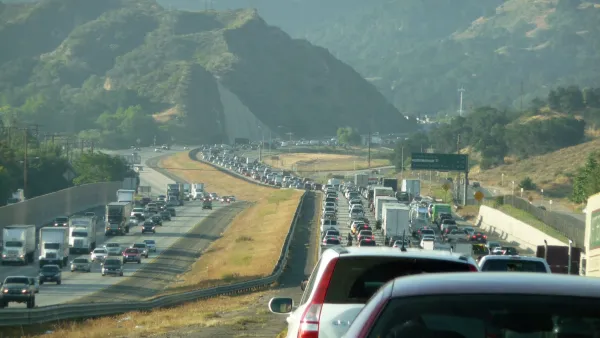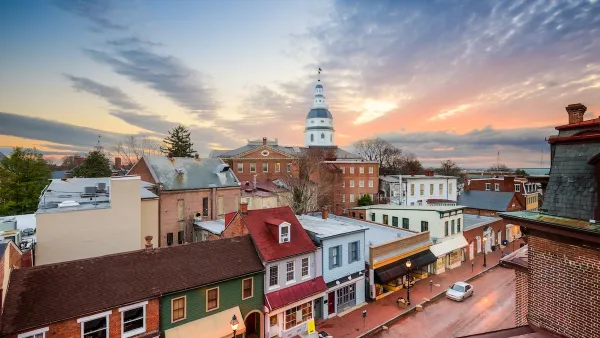Occasionally, someone familiar with my scholarship asks me: why do you care about walkability and sprawl and cities? Why is this cause more important to you than twenty other worthy causes you might be involved in? The answer: Freedom. I grew up in a part of Atlanta that, for a carless teenager, was essentially a minimum-security prison. There were no buses or sidewalks, as in many of Atlanta’s suburbs and pseudo-suburbs. But in my parents' non-neighborhood, unlike in most American suburbs, there were also no lawns to walk on, so if you wanted to walk, you had to walk in the street - not a particularly safe experience in 40 mph traffic.
Occasionally, someone familiar with my scholarship asks me: why do you care about walkability and sprawl and cities? Why is this cause more important to you than twenty other worthy causes you might be involved in?
The answer: Freedom. I grew up in a part of Atlanta that, for a carless teenager, was essentially a minimum-security prison. There were no buses or sidewalks, as in many of Atlanta's suburbs and pseudo-suburbs. But in my parents' non-neighborhood, unlike in most American suburbs, there were also no lawns to walk on, so if you wanted to walk, you had to walk in the street - not a particularly safe experience in 40 mph traffic.
So I was essentially trapped in my parents' house. (1) Long before I started thinking of street design as a public policy issue, I began to say to myself: "This is outrageous! I shouldn't have to live this way". And when I grew up, I began to think: "Maybe other people shouldn't have to live this way either!"
And as a grownup, I took jobs in places like Cleveland and St. Louis. Before I moved to St. Louis in 1990, I asked a friend where to live. He said: "I do not recommend the city." Since Atlanta contains plenty of upper-class areas (primarily because it annexed a big chunk of suburbia in 1954), I was shocked. And I asked myself: how could things have gotten to this stage? How come I can't live in a city without living five blocks from the corner of Ghetto and Gang? And I started to read and to learn about sprawl.
Now, I live within the city limits of a relatively healthy city (Jacksonville, FL) and my city even has some well-off areas near downtown. But even here, I see things that trouble me. For example, I had an appointment at a regional planning agency yesterday. The planning agency was located in a suburban office park. I decided to experiment with the municipal bus system (which I usually take to work, but had never taken to this destination).
I was surprised and yes, shocked when I learned that I couldn't walk the thirty-minute distance to the bus stop closest to my job. Why not? Because the office park was cut off by one limited-access highway to the south and another to the west, so there was simply no way to reach the bus stop without getting on another bus that served one of the highways and then changing buses. (2) Again, I was basically deprived of the freedom to walk to my destination.
Some people worry about sprawl primarily because they are worried about air pollution or global warming. But I worry more about freedom. Bad street design means that in some places, you just aren't free to move around on foot (or bike, or even bus in some areas). And urban decay and out-of-control sprawl mean that if your job or family takes you to the wrong metro area or the wrong side of town, you have to live or work in one of those places.
(1) For photos see http://atlantaphotos.fotopic.net/c1521148.html , in particular the Atlanta photos.
(2) For a visual picture of the situation go to www.maps.google.com . The office park is near Belfort Road in Jacksonville, FL. The highways are 95 and 202, and the bus stop I wanted to use is at Phillips Highway.

National Parks Layoffs Will Cause Communities to Lose Billions
Thousands of essential park workers were laid off this week, just before the busy spring break season.

Retro-silient?: America’s First “Eco-burb,” The Woodlands Turns 50
A master-planned community north of Houston offers lessons on green infrastructure and resilient design, but falls short of its founder’s lofty affordability and walkability goals.

Delivering for America Plan Will Downgrade Mail Service in at Least 49.5 Percent of Zip Codes
Republican and Democrat lawmakers criticize the plan for its disproportionate negative impact on rural communities.

Test News Post 1
This is a summary

Test News Headline 46
Test for the image on the front page.

Balancing Bombs and Butterflies: How the National Guard Protects a Rare Species
The National Guard at Fort Indiantown Gap uses GIS technology and land management strategies to balance military training with conservation efforts, ensuring the survival of the rare eastern regal fritillary butterfly.
Urban Design for Planners 1: Software Tools
This six-course series explores essential urban design concepts using open source software and equips planners with the tools they need to participate fully in the urban design process.
Planning for Universal Design
Learn the tools for implementing Universal Design in planning regulations.
EMC Planning Group, Inc.
Planetizen
Planetizen
Mpact (formerly Rail~Volution)
Great Falls Development Authority, Inc.
HUDs Office of Policy Development and Research
NYU Wagner Graduate School of Public Service





























